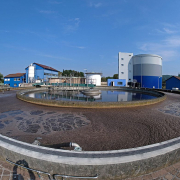Phosphorus: The Market Is Driven by Rising Demand
According to American company Transparency Market Research Inc., the elemental phosphorus (P4) and derivatives market is witnessing steady growth driven by rising demand in agriculture, chemicals, and pharmaceuticals. Innovations in sustainable phosphorus recovery and eco-friendly processing methods would shape the industry’s future. As stated, the market was valued at 2.5 billion US-Dollar in 2023 and is projected to reach 4.6 billion US-Dollar by 2034, growing at a compound annual growth rate (CAGR) of 5.7 percent from 2024 to 2034.
Elemental phosphorus exists predominantly in white, red, yellow, and black allotropic forms, with white and red phosphorus being the most commercially significant, the American market research firm informed. It serves as a precursor for various phosphorus chemicals, including phosphoric acid, phosphorus pentoxide, and phosphorus sulfides. These derivatives are integral to multiple industries:
- Agriculture: Phosphorus-based fertilizers are essential for enhancing soil fertility and crop yields. The depletion of soil phosphorus due to intensive farming practices necessitates the continuous application of these fertilizers to meet global food demands.
- Flame Retardants: Phosphorus compounds are utilized in manufacturing flame retardants, which are critical for reducing the flammability of materials in construction, electronics, and textiles.
- Water Treatment: Phosphorus derivatives play a role in water treatment processes, aiding in the removal of impurities and ensuring water quality.
- Lithium-Ion Batteries: The rise of electric vehicles (EVs) and renewable energy storage solutions has increased the demand for lithium-iron phosphate (LiFePO₄) batteries, where phosphorus is a key component.
Phosphate fertilizers for agriculture
The global phosphate fertilizers market alone is valued much higher. As reported by Ireland-based market research store ResearchAndMarkets.com, the worldwide market for phosphate fertilizers was valued at 70.6 billion US-Dollar in 2024 and is projected to reach 91.1 billion US-Dollar by 2030, growing at a CAGR of 4.4 percent from 2024 to 2030.
Several emerging trends would shape the future of this market, which is driven by a growing focus on sustainability and the need to improve agricultural productivity. “One significant trend is the increasing interest in organic and eco-friendly fertilizers. With rising consumer demand for organic food and concerns about the environmental impact of traditional farming practices, farmers are exploring phosphate sources that are less harmful to the environment. This has led to the development of bio-based phosphate fertilizers and alternatives that rely on natural sources of phosphorus, such as animal waste and bone meal.”
Another trend is the growing emphasis on soil health management. Farmers and agronomists were becoming more aware of the need to maintain balanced soil fertility, not just through chemical inputs but also by managing organic matter, microbial activity, and soil structure. “This holistic approach to soil health, combined with the use of phosphate fertilizers, is helping farmers improve crop yields while promoting sustainable agricultural practices,” ResearchAndMarkets.com stated. “Additionally, phosphate recycling is gaining traction as an important strategy for ensuring long-term phosphorus availability. Innovations in recovering phosphorus from wastewater and agricultural runoff are contributing to the circular economy in agriculture, reducing reliance on mined phosphate rock.”
Moreover, the development of slow-release and controlled-release fertilizers is another important trend. These fertilizers release phosphorus gradually, ensuring that it is available to plants throughout the growing season and reducing the risk of runoff and leaching. “As environmental regulations become stricter and concerns about nutrient pollution increase, slow-release fertilizers are expected to gain more market share, especially in regions where agriculture is a major contributor to water pollution.”
transparencymarketresearch.com, researchandmarkets.com
(Published in GLOBAL RECYCLING Magazine 2/2025, Page 7, Photo: Fraunhofer IFF)






